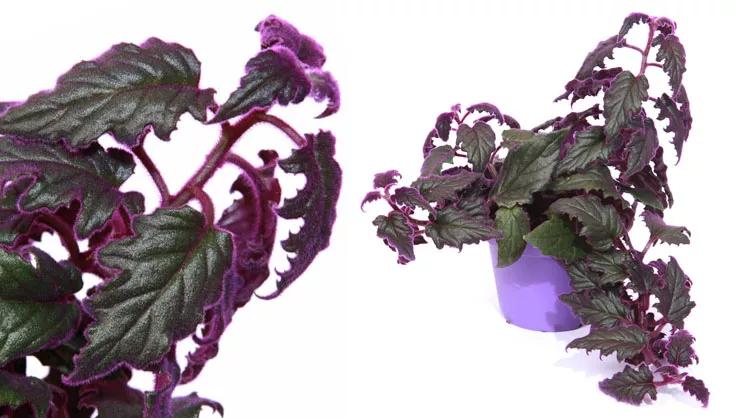How to Care for a Purple Passion Plant

How to Care for Purple Passion Plants
Light
Purple Passion Plants thrive in bright, indirect light. Too much direct sunlight can scorch their delicate leaves, while too little light can cause them to lose their vibrant color. A spot near a window with filtered light is ideal.
Soil
A well-draining, peat-based potting mix is recommended. You can add perlite or vermiculite to improve drainage. These plants prefer slightly moist but not waterlogged soil.
Fertilizer
During the growing season (spring and summer), feed your Purple Passion Plant with a half-strength balanced liquid fertilizer every month. Reduce feeding in the fall and winter.
Watering
Water when the top inch of soil feels dry. Overwatering can lead to root rot, so ensure your pot has good drainage. These plants enjoy a bit of humidity, so occasional misting can be beneficial.
Pruning
Pruning helps maintain a bushy, full appearance. Trim back leggy stems or any overgrown areas, especially after the flowering season, to promote new growth.
Repotting
Repot your Purple Passion Plant every 1-2 years, or when it becomes root-bound. Spring is the best time for repotting. Use a pot that’s slightly larger than the current one.
Propagation
Propagation is easily done through stem cuttings. Place a cutting in water or moist soil, and roots should develop in a few weeks.
Common Problems with Purple Passion Plants
Pests and Diseases
Watch out for aphids and spider mites. Regular inspections and prompt treatment with insecticidal soap or neem oil can keep these pests at bay. Overwatering can lead to root rot, so be cautious with your watering schedule.
Toxicity
Purple Passion Plants are generally considered non-toxic to pets and humans. However, it's always a good practice to keep houseplants out of reach of pets and children.
Purple Passion Plant FAQs
Why is my Purple Passion Plant losing its purple color?
A loss of color is often due to insufficient light. Ensure your plant is receiving bright, indirect light to maintain its vibrant hue.
Can Purple Passion Plants be grown outdoors?
In warmer climates, they can be grown outdoors in shaded areas. However, they are primarily indoor plants and need to be protected from direct sunlight and extreme temperatures.
How do I manage the flowers of a Purple Passion Plant?
Some gardeners prefer to remove the flowers to maintain the plant's energy in its stunning foliage. You can snip off the flower stalks at their base if you choose to do so.
Caring for a Purple Passion Plant is a delightful journey. With its striking appearance and relatively straightforward care requirements, it’s a fantastic choice for both seasoned gardeners and beginners alike. Enjoy the lush, vibrant addition it brings to your indoor garden!
Print this Article:
Get the Dirt
Stay up to date on new articles and advice. Please fill out the information below.
